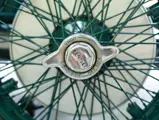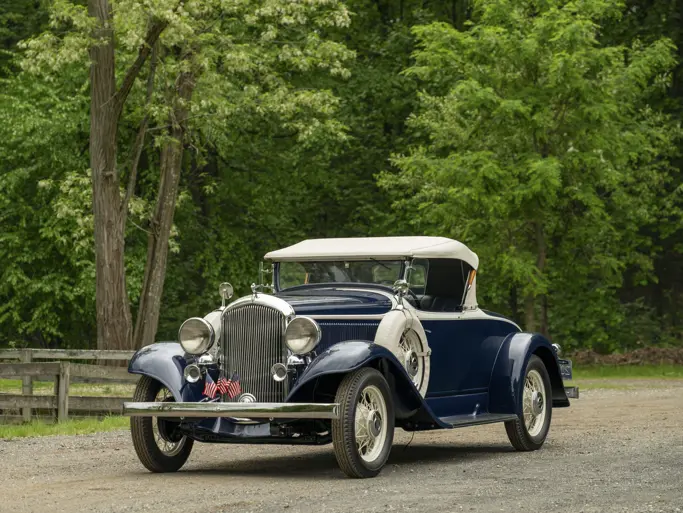Please also note number FB 3320 was found to be stamped on the front dumb iron, which corresponds to a sister 4 ½ Litre Bentley.
Upon further research we believe the car’s chassis was replaced in the 1930s with an original 4 ½ litre chassis, numbered AD 3561. This is, however, a very well known Bentley in enthusiast circles.
100 hp @ 3,500 rpm, 4,398 cc SOHC four-cylinder, four-speed manual transmission, right-hand drive, four-wheel mechanical drum brakes, semi-elliptic leaf spring suspension. Wheelbase: 130"
- Matching-numbers Vanden Plas Tourer with known provenance
- Original Bentley factory maintenance records through 1939
- Award-winning older restoration with lovely patina
- Well maintained and regularly driven by current and previous owners
- Eligible for countless AACA, CCCA, RROC and BDC meets
Had it not been for Woolf Barnato, Bentley would likely have been out of business by the mid-1920s – well before scoring four consecutive wins at Le Mans, starting in 1928. Barnato’s money was of paramount significance in the rescue of the fabled company. It enabled Bentley to reduce its reliance on the aging and unprofitable 3-Litre model by underwriting the development and manufacture of the 6½-, 4½- and 8-Litre models. True, all were designed by W.O. Bentley, but they came to fruition with Barnato’s help.
The Bentley of the 1920s was a painstakingly crafted vehicle. Though chassis frames were supplied by outside contractors, the balance was fabricated slowly and methodically within the modest brick sheds that sprinkled the Cricklewood site. On average, Bentley produced 300 cars annually or about six to seven cars per week. It took more than a bit of juggling…and pleading with suppliers to manage cash flow. Engines and transmissions were manufactured to exceedingly high standards; each was tested thoroughly before being fitted to a chassis. At such a small rate of production, there was no justification for series manufacture of each and every model, thus keeping costs high and cash flow minimal.
Vanden Plas and the 4½-Litre
Like Rolls-Royce, all Bentleys were bodied by independent coachbuilders. Each operational chassis was fitted with a radiator, hood panels and firewall and then road-tested on public highways prior to being sent to completion for its bodywork. No less than 120 coachbuilders (mostly British) supplied bodies, the most prolific being Vanden Plas, which provided 669 bodies from 1922-1931 (Gurney Nutting was second, supplying 360 bodies over a similar period). Bentley’s relationship with Vanden Plas began in 1922; by 1924, the company bodied 84 Bentleys alone and in 1925 leased a portion of their premises to Bentley for the latter’s service department. Vanden Plas became the coachbuilder of choice for Bentley.
The new 4½-Litre Bentley arrived on the scene in late-1927 following the prototype’s debut at that year’s Le Mans race. The car broke the lap record prior to the famous (or infamous) White House Corner disaster. It was the successor to the 3-Litre, using features of the original Bentley four-cylinder as well as the later six-cylinder engine upon which development had begun in 1925. It shared the same bore and stroke as the 6½-Litre (100mm x 140mm) but retained the shaft-and-helical camshaft drive of the 3-Litre. The 4½-Litre was brought about by the need for greater power and speed, which were required for Bentley to ensure competitive supremacy. The engine quickly proved its mettle with an outright win in the 1928 Le Mans race and subsequent Brooklands competition success. During the production run from 1927 to the takeover from Rolls-Royce in 1931, few modifications to the engine were deemed necessary attesting to its overall excellent design. Most significant was the introduction of a plate-type clutch in 1929 which replaced the earlier cone variety. In standard Vanden Plas Tourer form, the 4-Litre Bentley was good for 92 mph; in Le Mans trim, 120 mph was possible – quite remarkable for the era. Bentley built a total of 665 units over the model’s lifespan, almost all constructed on the longer 130-inch chassis first used on the 3-Litre. One-hundred-sixty were bodied with the now very desirable Vanden Plas Four-Seater Open Tourer coachwork.
Chassis FB1337
FB1337 is a truly remarkable Bentley. Unlike many of its sister cars, it was never converted to fashionable Le Mans replica status. It exists today with the body, chassis, engine and registration with which it was born. Delivered in January 1929 from the Bentley Motors, Ltd. Cricklewood, England facility, its first owner was F.W. Howarth, The Danes, Higher Crumpshall, Manchester, England. Detailed factory records provided by the Bentley Driver’s Club are available for inspection as they indicate the car’s mechanical history through 1939. It passed through several owners before arriving in the United States from England in 1956.
The Boone family of Winnetka, Illinois acquired the car in 1966 after which a complete ground-up restoration followed of the original Vanden Plas body as well as all mechanical aspects of the car. Confirming the quality of the restoration, the car was a consistent top award winner competing at 19 major events from 1968 to 1976. Those included three AACA meets, seven GIRCCA spring concours, two RROC National meets, seven Grand National Classics and one BDC International meet. Honors include the 1970 NIRCCA Grand National Award for Excellence, 1970 RROC 1st Place Vintage Bentley, 1972 AACA S.F. Edge Award for the Outstanding Restoration of the Year for a Foreign Made Automobile Entered in a National Meet, 1974 Best Overseas Car, PDC Kensington Gardens, London and 100 points in the 1976 Senior Foreign at the Indianapolis Grand Classic. The current owner has participated in seven North American Vintage Bentley Meet rallies from 2000-2008. In addition, the car is regularly driven 400-500 miles per year.
FB1337 is painted an appropriate British Racing Green over green hides. Both exhibit a lovely patina attesting not only to a proper restoration many years past but also the pride and care lavished during the stewardship of its owners. In the current owner’s collection since February 1999, the car has been carefully maintained and is replete with period details such as the large Le Mans petrol tank, headlight with stone guards, Hartford shock absorbers, Wefco spring gators, twin leather bonnet straps, a corded steering wheel and sloper SU carburetors. The bodywork is finished in the traditional Vanden Plas style with an aluminum bonnet and fabric covered coachwork.
We are told the vintage Bentley runs and drives beautifully. Compared to the countless show cars that rarely see the open road, it is refreshing to witness yet another Bentley enthusiast regularly driving this important motor car and ensuring that it is well sorted. It represents a rare opportunity to own a spectacular, unmolested car with known provenance that maintains its original Vanden Plas body and matching-numbers engine and chassis. This is what Bentley experts consider to be one of the best 4½-Litre Bentleys available today. Without question, the new owner will be the envy at AACA, CCCA, RROC and BDC meets.


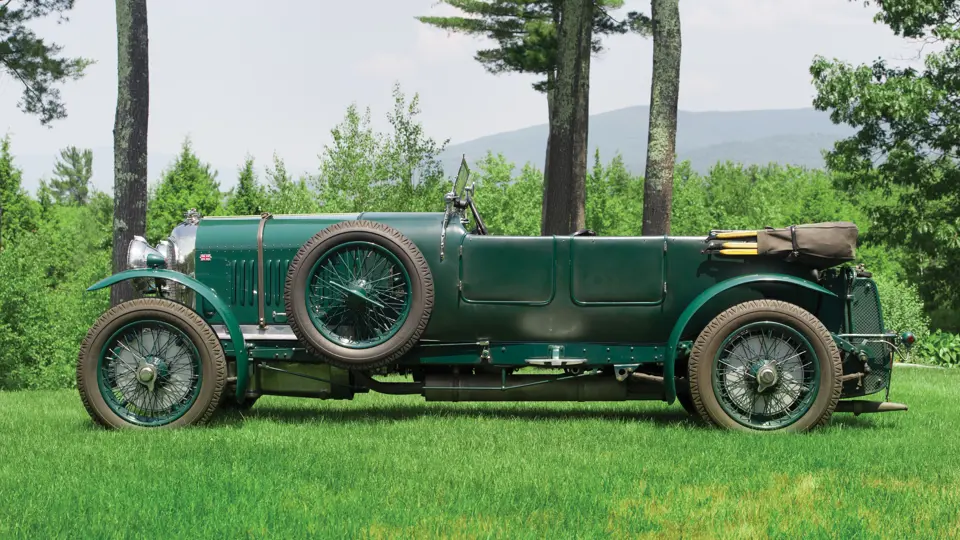




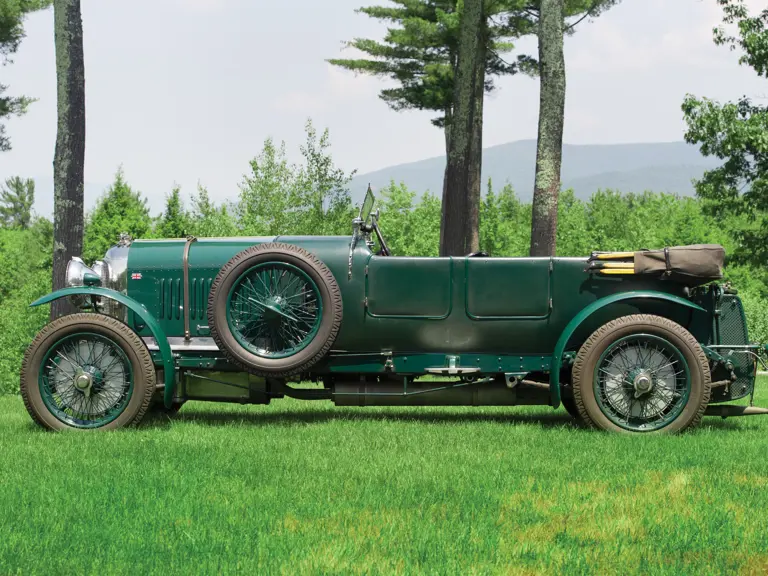
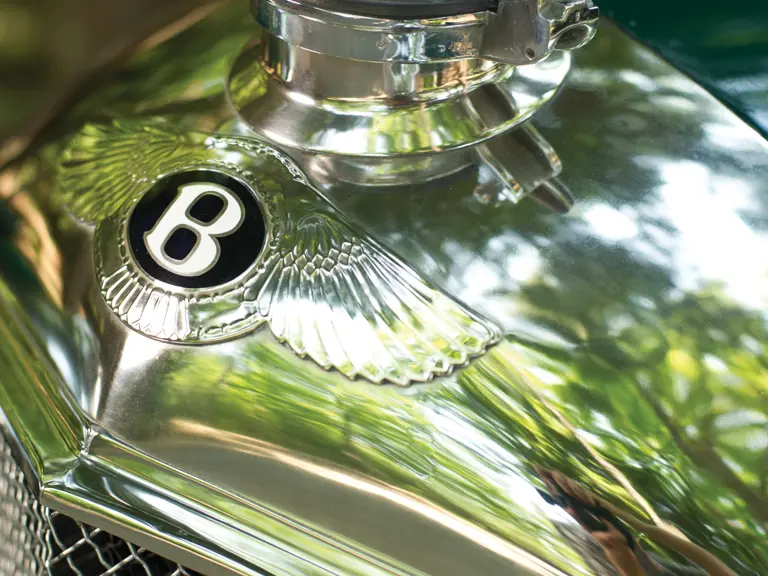








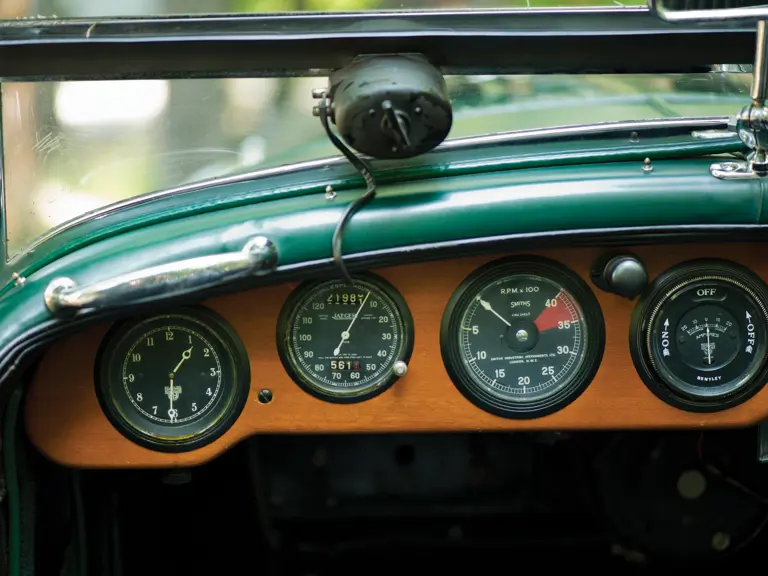


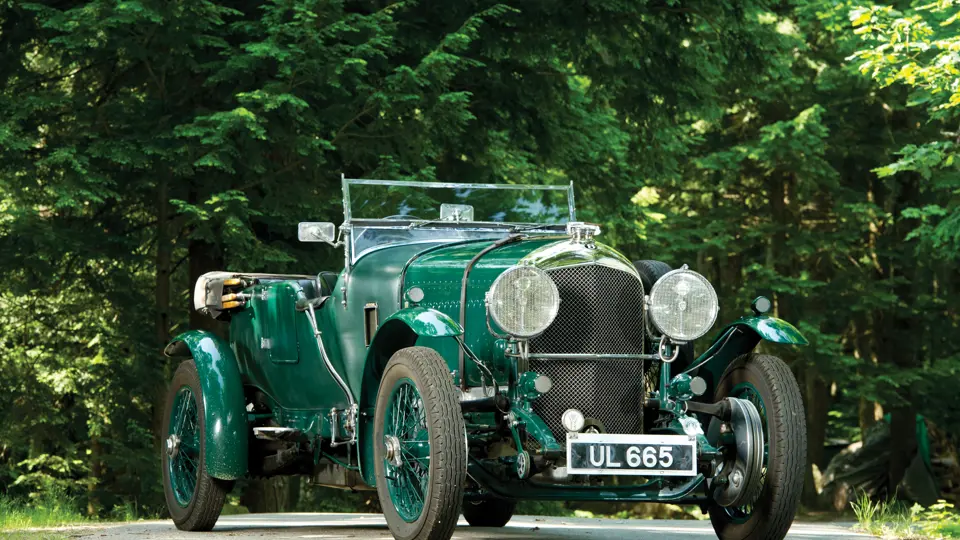
 | Monterey, California
| Monterey, California











